AI vs. Traditional Methods for Garden Restoration
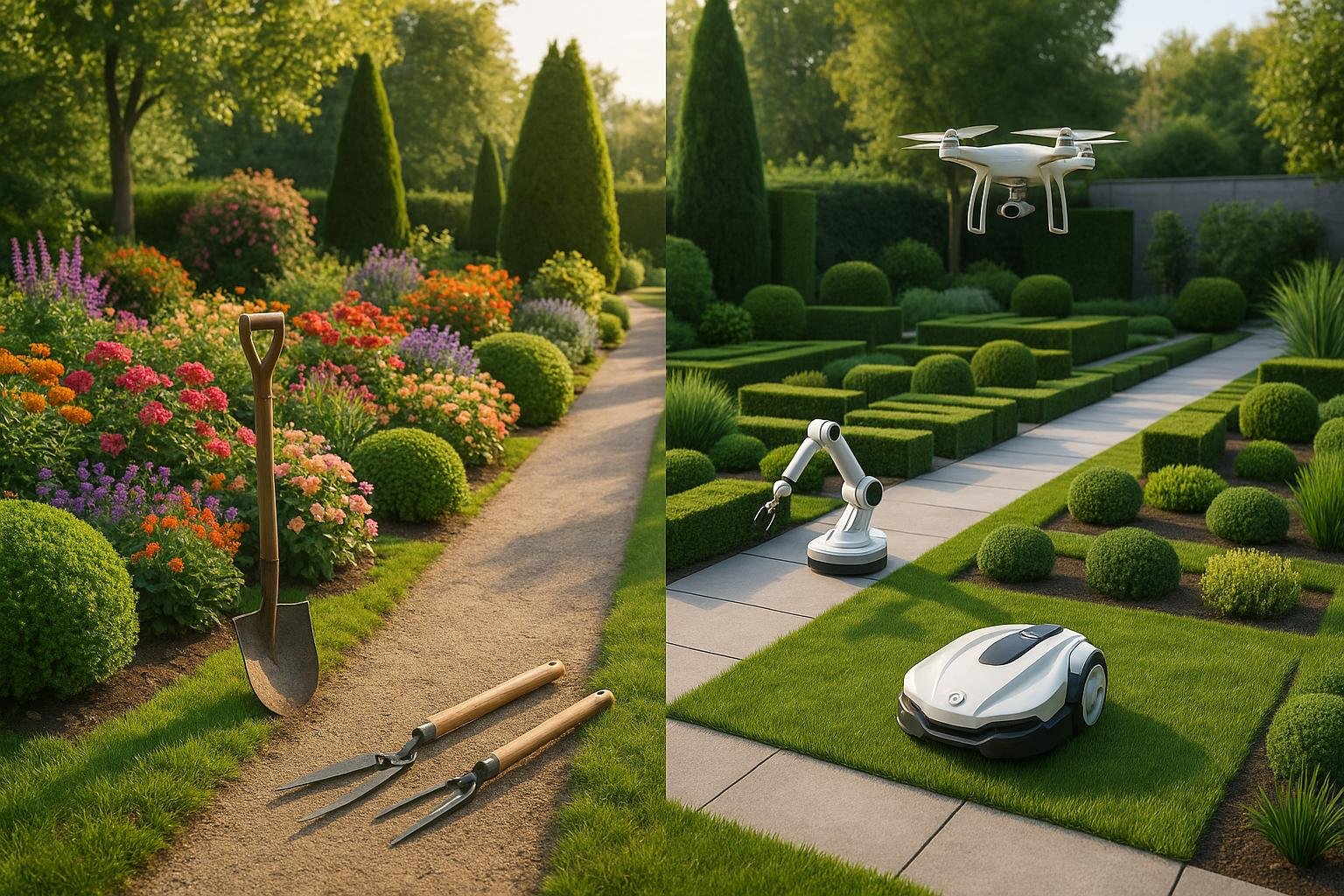
Restoring a garden can be a rewarding project, whether you're working on a small yard or a historic estate. But should you rely on AI-powered tools or stick with hands-on expertise? Here's what you need to know:
Key Points:
- AI Tools: Fast, data-driven, and cost-effective. Platforms like AIGardenPlanner can generate designs, recommend plants, and optimize irrigation in minutes.
- Traditional Methods: Rely on human expertise for detailed planning, historical research, and personalized care. Best for heritage gardens and unique designs.
- Hybrid Approach: Combine AI's speed with expert craftsmanship for the best results.
Quick Comparison:
| Aspect | AI Methods | Traditional Methods |
|---|---|---|
| Speed | Instant designs and recommendations | Time-intensive; weeks to months for planning |
| Cost | Lower, starting at $9/month | Higher, with annual expenses of $800–$1,500 |
| Precision | Data-driven, real-time adjustments | Relies on expert judgment and experience |
| Historical Context | Limited accuracy for heritage gardens | Excels at preserving historical details |
| Scalability | Handles multiple projects simultaneously | Limited by human resources |
Bottom Line:
AI tools are perfect for quick, affordable projects, while human expertise is essential for complex or historically important gardens. For most, a combination of both delivers the best results.
I Let Artificial Intelligence Design My Garden Layout: Gardening Inspiration

AI-Driven Garden Restoration
Artificial intelligence is transforming garden restoration by adding a layer of scientific precision to what has traditionally been considered an art. These tools analyze a wide range of data - like soil conditions, weather patterns, and other environmental factors - to create restoration plans that are both practical and visually appealing.
How AI Tools Work in Garden Restoration
AI-powered garden restoration tools work by processing a variety of data streams to design detailed restoration strategies. They analyze weather forecasts, soil quality metrics, historical climate data, satellite imagery, and sensor inputs to model ideal growing conditions and craft tailored restoration plans [1][2][3].
For example, you can upload a photo of your garden, and advanced algorithms will identify plants, structures, soil conditions, and problem areas. These insights are then cross-referenced with local climate data - such as temperature, rainfall, and seasonal changes - to create a plan that fits your specific environment.
What sets AI apart is its ability to process real-time environmental data. Sensors and remote systems monitor soil conditions continuously, enabling quick and precise actions, like adjusting nutrient levels or irrigation schedules. This real-time adaptability ensures that restoration efforts are both timely and effective [2][3].
Benefits of AI-Powered Methods
The benefits of using AI in garden restoration go well beyond saving time. For starters, AI tools can generate detailed restoration plans in just minutes, compared to the weeks traditional methods might require.
AI also excels at providing plant recommendations tailored to specific climates. By identifying species that are drought-resistant, frost-tolerant, or native to the area, these tools reduce guesswork and improve the resilience of your garden [1].
Another major advantage is resource efficiency. AI systems analyze real-time data to determine exact fertilizer needs, suggest optimal plant placements based on sunlight exposure, and create smarter irrigation schedules by factoring in soil moisture and upcoming weather patterns. This level of precision not only reduces waste but also improves the overall success of the restoration process [1][3].
Scalability is another standout feature. Whether you're working on a small backyard garden or managing several large properties, AI tools can handle the complexity, providing consistent, high-quality results with continuous environmental monitoring [3].
Lastly, all these efficiencies naturally lead to cost savings. By minimizing the need for multiple site visits and extensive consultations, AI-driven restoration can significantly lower project expenses.
AIGardenPlanner Features
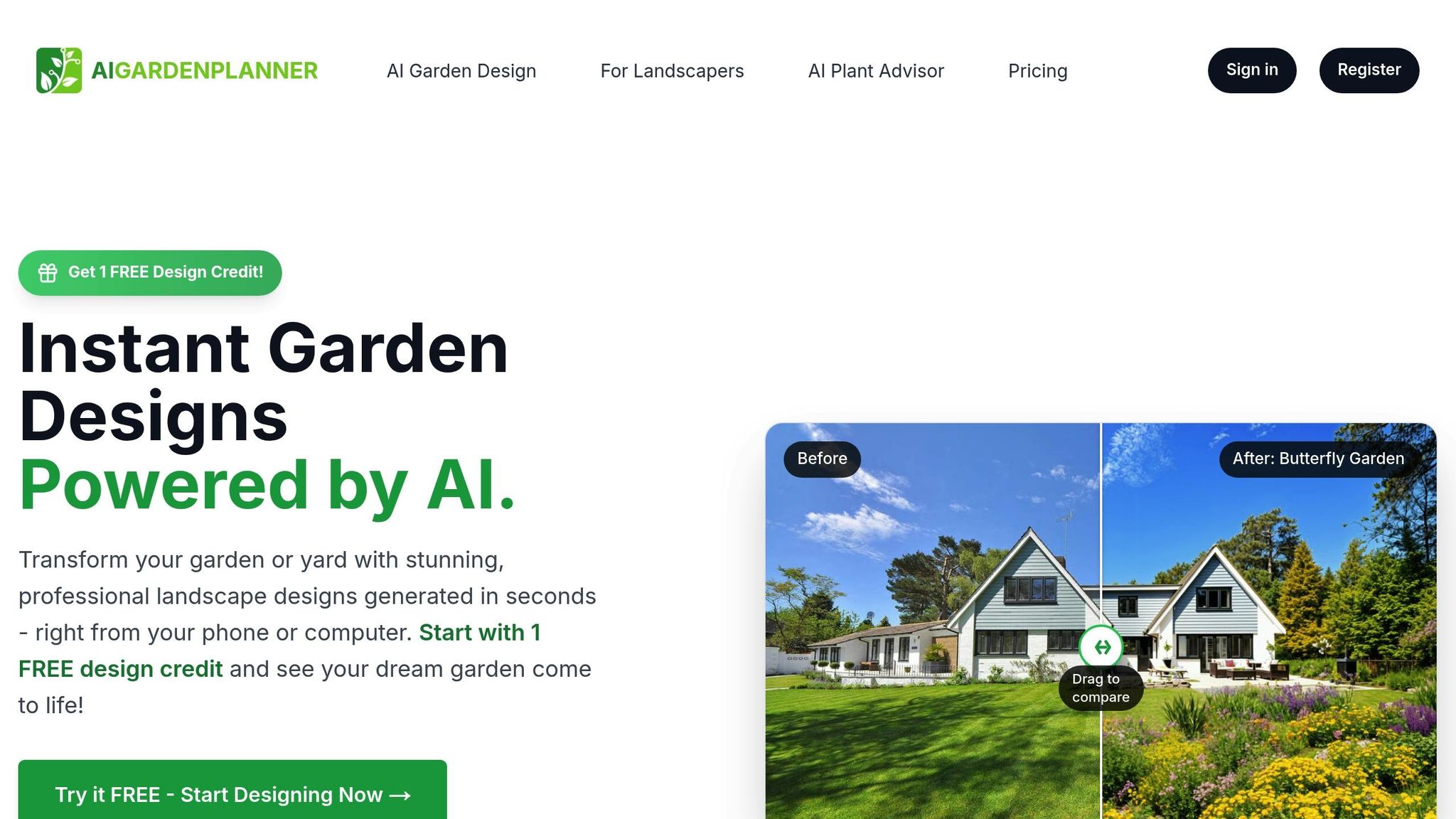
A great example of these AI capabilities in action is AIGardenPlanner, a tool designed to turn data insights into practical, user-friendly garden designs. With AIGardenPlanner, you can upload a garden photo and receive professional-grade designs tailored to your space.
The platform offers over 50 garden styles to choose from, including contemporary minimalist layouts, traditional cottage gardens, Mediterranean landscapes, and native plant designs. Users can even customize their own style, ensuring the restored garden aligns with their personal preferences while meeting local environmental needs.
One of AIGardenPlanner's standout features is its location-based plant recommendations. The AI Plant Advisor evaluates your geographic area, local climate, soil quality, and seasonal trends to suggest plants that are most likely to thrive in your garden. This feature is especially helpful for tackling challenging restoration projects.
Beyond design, AIGardenPlanner provides high-resolution downloads, detailed growing guides, and maintenance schedules to help your garden flourish long after the restoration is complete. The platform is suitable for both DIY gardeners and professional landscapers.
For commercial users, AIGardenPlanner offers Pro and Premium plans with licensing options. These plans include monthly photo generation limits ranging from 200 to 500 AI-generated designs, making it a practical solution for landscape professionals managing multiple projects simultaneously.
Traditional Garden Restoration Methods
Traditional garden restoration has been a cornerstone of preserving landscapes, relying on proven techniques, skilled professionals, and a commitment to historical accuracy. These methods focus on hands-on expertise, making them especially valuable for restoring heritage gardens and historically significant landscapes.
Steps in Traditional Restoration
The process of traditional garden restoration begins with a thorough site analysis. Horticulturists and landscape historians spend weeks examining the garden's current state, documenting plants, structures, and soil conditions through detailed inspections and testing.
Historical research plays a critical role as well. Specialists dive into old records, photographs, and other sources to uncover the garden's original design. This investigative phase can take months, as experts piece together the story of the garden's past.
Once the research is complete, landscape architects craft hand-drawn plans using traditional drafting methods. These plans detail plant placement, hardscape elements, and seasonal factors, all guided by the designer's horticultural expertise and artistic vision.
The final phase is implementation, which relies on highly skilled craftspeople. Master gardeners carefully choose plants based on their deep understanding of local growing conditions. They use traditional propagation techniques and prepare the soil using methods refined over generations. This meticulous approach ensures a balance between historical authenticity and expert intuition.
Strengths of Traditional Methods
Traditional restoration methods come with several notable advantages. Experienced horticulturists bring a unique ability to detect subtle signs of plant stress, soil problems, or design flaws - insights that often go unnoticed in purely data-driven approaches. Their years of hands-on experience allow them to "read" the landscape in ways that technology cannot replicate.
Another key strength is historical accuracy. When restoring heritage gardens, traditional methods ensure the use of authentic plant varieties and historically appropriate design elements. This level of detail is especially important for museums, historic homes, and other properties that aim to preserve their original character.
The personal touch of traditional restoration also gives each garden a unique personality. Projects reflect the designer's aesthetic sensibilities and the specialized knowledge of local craftspeople, resulting in landscapes that feel both organic and deeply connected to their surroundings.
Additionally, traditional methods help preserve regional gardening traditions and knowledge of native plants. Master gardeners often have an intimate understanding of local species, time-tested growing techniques, and plant combinations that thrive in specific microclimates.
Challenges of Traditional Approaches
Despite their strengths, traditional restoration methods come with challenges. One of the biggest is the time involved. Planning and design phases can take months before planting even begins, which can be frustrating for clients with tight deadlines or seasonal constraints.
Cost is another significant hurdle. These projects often involve multiple site visits, extensive consultations, and premium labor costs, especially for custom work like hand-drawn plans or sourcing rare plant varieties.
Scalability can also be an issue. A single landscape architect or team may only be able to handle a limited number of projects at a time, which can slow progress for larger properties or clients managing multiple locations.
Subjectivity in design is another potential challenge. Interpretations of historical evidence can vary, leading to differences in plant selection or placement that may not align with a standardized, data-driven approach.
Lastly, adapting to changing environmental conditions can be difficult. While experienced gardeners have deep knowledge of historical growing patterns, they may be slower to adjust to modern challenges like shifting precipitation levels, rising temperatures, or new pest threats. Additionally, as master gardeners retire, there’s a risk of losing decades of accumulated wisdom and expertise, which could impact the long-term preservation of these traditional practices.
These challenges highlight the importance of balancing traditional methods with modern techniques to ensure the preservation of both historical authenticity and practical functionality.
sbb-itb-4d6a8dd
🚀 Ready to Reinvent Your Garden?
Join thousands of homeowners who have transformed their gardens using our AI design tool. Upload one photo to explore endless possibilities.
Get your AI garden designs →Side-by-Side Comparison: AI vs. Traditional Methods
Deciding between AI-powered and traditional garden restoration methods often comes down to understanding their strengths and limitations. Each approach shines in different scenarios, with factors like project size, budget, timeline, and specific goals influencing the decision. Here's a breakdown of how they compare:
Comparison Table: AI vs. Traditional Restoration
| Aspect | AI-Powered Methods | Traditional Methods |
|---|---|---|
| Speed | Designs completed in minutes to hours, with instant recommendations | Planning and design can take weeks or even months |
| Cost Structure | Lower ongoing costs, starting at $9/month; annual maintenance typically ranges from $200–$400 | Higher labor and maintenance costs, with annual expenses between $800–$1,500 |
| Water Efficiency | Smart systems cut water usage by 50–75%, reducing annual costs from $200–$1,200 to $50–$300 for 1,000 sq ft | Traditional sprinklers tend to overwater by 30–40%, leading to higher water bills |
| Scalability | Can handle multiple projects at once; premium plans support up to 1,000 projects | Limited by the availability of skilled professionals; typically focuses on one project at a time |
| Personalization | Provides recommendations based on local climate, soil, and user preferences | Relies on expert judgment for tailored solutions |
| Historical Accuracy | May struggle with interpreting historical contexts accurately | Excels in restoring heritage gardens and preserving authentic plant varieties |
| Environmental Impact | Reduces chemical use but increases digital energy consumption | Lower digital footprint but often involves higher chemical and fuel usage |
| Learning Curve | Easy to use; no prior design experience needed | Requires advanced horticultural knowledge and years of training |
When to Use Each Approach
The best method depends on your project’s priorities. AI tools are ideal for quick, affordable, and eco-friendly garden designs. They’re particularly effective for projects with tight budgets, multiple design iterations, or standard residential needs. For example, tools like AIGardenPlanner can transform garden photos into professional designs and suggest plants based on your location, taking much of the trial and error out of the process.
On the other hand, traditional methods are better suited for heritage properties, historically significant landscapes, or projects requiring deep local expertise. Skilled gardeners can interpret subtle environmental details, honor regional plant traditions, and ensure authenticity when restoring historical gardens. Their expertise is especially valuable when working with rare plants, analyzing historical records, or creating unique, artistic designs.
For many projects, a combination of both methods works best. AI can handle the initial planning and plant selection, while experienced professionals take care of the implementation and fine-tuning. This hybrid approach leverages the speed and cost savings of AI while preserving the nuanced insights that only human expertise can provide.
Lastly, consider the environmental trade-offs. AI systems promote sustainable landscaping practices, though they do consume digital energy. Traditional methods, while having a smaller digital footprint, often rely on higher chemical inputs and fuel-powered tools, which can increase their environmental impact. Balancing these factors can help you make the right choice for your garden restoration project.
Real-World Applications and Use Cases
Examples from real life highlight how different methods shine in various garden restoration projects. Whether it's a small backyard or a sprawling, historically inspired landscape, both AI-driven tools and traditional methods bring something valuable to the table. These examples provide a foundation for comparing how modern technology and expert craftsmanship complement each other.
AI in Action: Case Studies
AI-powered garden restoration has delivered impressive outcomes. Take the 2025 CGAN study, for instance: it restored sections of the Classical Gardens of Jiangnan with an impressive 91.08% accuracy. This study focused on projects ranging from 200 to 1,000 square meters (around 2,200 to 10,800 square feet), using 1,381 samples from historical plans to guide the process [4].
Another standout example is AIGardenPlanner, which applies similar AI techniques to revive period-specific American gardens. For Colonial-era landscapes, the platform suggests plants like boxwood hedges, heirloom roses, and native wildflowers. When tackling Victorian gardens, it identifies ornate planting patterns and recommends design elements that match the era's elaborate aesthetic. The tool doesn’t stop there - it processes over 50 unique garden styles and tailors its suggestions to local conditions. For instance, it can recommend drought-tolerant native plants for a prairie garden restoration, ensuring that its designs are both historically accurate and ecologically appropriate.
Traditional Restoration Use Cases
Traditional methods lean heavily on research and the expertise of skilled professionals. Specialists dive into archives, study original planting plans, and consider environmental factors to recreate gardens that are true to their historical roots. This hands-on approach preserves the cultural and historical essence of the landscape, ensuring the final result feels authentic and deeply connected to its origins.
Combining AI and Traditional Techniques
Some of the most successful restoration projects merge the speed and efficiency of AI with the nuanced understanding of traditional experts. For example, AI tools like AIGardenPlanner can handle the initial stages, quickly generating design options based on historical styles. From there, human experts take over, refining the AI's suggestions to suit local conditions and ensuring long-term plant health and compatibility.
This collaborative approach - where AI lays the groundwork and traditional expertise fine-tunes the details - results in restorations that are efficient, precise, and sensitive to the garden’s unique context [4].
Conclusion
Choosing between AI-driven tools and traditional methods for garden restoration ultimately comes down to what best suits your project. Each approach offers unique benefits, and the most effective restorations often blend the strengths of both.
Key Takeaways
AI-powered tools shine in speed, precision, and convenience. For instance, platforms like AIGardenPlanner can analyze over 50 garden styles and provide tailored plant suggestions within minutes. This makes them ideal for quick turnarounds and budget-friendly solutions.
Traditional methods bring unmatched expertise and a deep understanding of local conditions. Human specialists excel at maintaining historical authenticity, adapting to specific environments, and ensuring long-lasting results. They focus on the intricate details that make each garden unique, while respecting environmental and cultural nuances.
The hybrid approach offers the best of both worlds. By combining AI's efficiency with the detailed craftsmanship of human expertise, you can achieve restorations that are both practical and thoughtfully executed. AI handles the analytics, while human input ensures the personal touch that makes gardens truly special.
Final Thoughts
Garden restoration doesn’t have to be a choice between cutting-edge technology and time-honored techniques. Instead, it’s about integrating both to balance tradition with modern innovation.
Whether you’re reimagining a small backyard or revitalizing a historic landscape, start by using AI tools like AIGardenPlanner to develop your initial ideas. From there, decide if you want to continue on your own or collaborate with traditional experts to refine your vision. By tailoring your approach to your timeline, budget, and goals, you can create outdoor spaces that beautifully connect people with nature.
Take that first step with confidence and bring your garden restoration to life.
FAQs
How can AI tools like AIGardenPlanner make my garden restoration project faster and easier compared to traditional methods?
AI tools like AIGardenPlanner are changing the game for garden restoration, making the process faster and easier than ever. Instead of spending countless hours sketching layouts or researching the best plants, this platform uses AI to create professional garden designs from your photos in just minutes.
One standout feature is its personalized plant recommendations, which consider your location, climate, and personal preferences. This takes the guesswork out of choosing the right plants, saving you time and avoiding expensive errors. By handling complex tasks and offering precise, data-backed suggestions, AI tools like this streamline your project, helping you achieve great results with less effort.
What are the benefits of combining AI tools with traditional methods for garden restoration?
Combining AI tools with time-tested gardening methods creates a powerful partnership that leverages the strengths of both approaches. AI brings precision and efficiency to the table, offering data-driven insights to assess your garden's unique needs, manage resources smartly, and plan layouts that align with sustainable practices. On the other hand, traditional gardening methods provide the tactile expertise, a connection to local ecosystems, and the creative, personal touch that no algorithm can replicate.
This blend makes garden restoration both practical and flexible. For instance, AI can suggest plant varieties that thrive in your specific climate and soil conditions, while traditional techniques ensure those plants are nurtured and maintained correctly. The result? A garden that's not only beautiful and functional but also contributes to the long-term health of the environment.
When is it better to use traditional methods instead of AI tools for garden restoration?
Traditional garden restoration techniques shine in situations where local knowledge, heritage preservation, or maintaining ecological balance are priorities. Think about restoring historic gardens, safeguarding native plants, or fostering community involvement through hands-on projects. These approaches not only honor the area's history but also create a meaningful, personal connection to the land.
They're particularly well-suited for regions with limited access to modern technology or for gardeners who enjoy a more hands-on, instinctive way of working. While AI tools bring speed and modern solutions, traditional methods provide a sense of dependability and harmony with nature, making them irreplaceable in certain contexts.
🎨 Visualize Your Dream Garden Today!
Transform any outdoor space into a professional landscape design in minutes. Just upload a photo, choose your style, and let our AI do the rest.
Start your garden transformation now →Related posts
Related Articles

AI Tools for Holiday Garden Planning
Transform your garden into a festive holiday display effortlessly with AI tools that personalize designs and plant recommendations.

How Persian Gardens Adapt to Seasonal Changes
Explore how Persian gardens ingeniously adapt to seasonal changes through smart design, plant selection, and water features for year-round beauty.
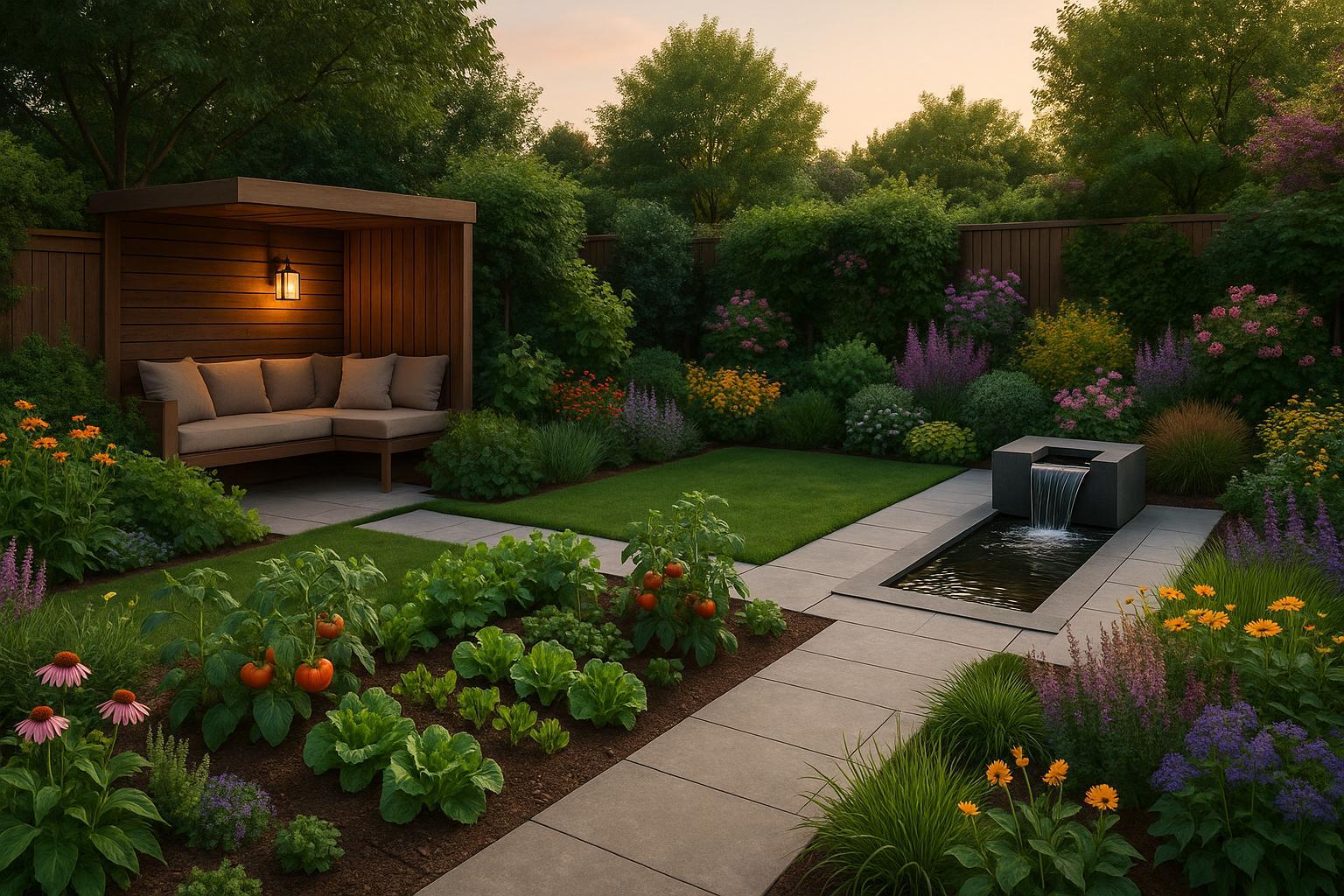
AI in Garden Design: Optimizing Multi-Use Spaces
Explore how AI simplifies the design of multi-use gardens, balancing aesthetics and functionality for diverse outdoor spaces.

AI-Driven Garden Furniture Placement: How It Works
Transform your garden with AI-driven furniture placement that optimizes style, comfort, and functionality based on your space and preferences.
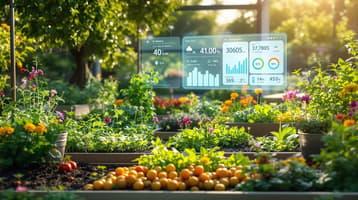
AI Tools for Adjusting Planting to Rainfall Shifts
Learn how AI tools can optimize your gardening by adjusting planting schedules and layouts based on shifting rainfall patterns.
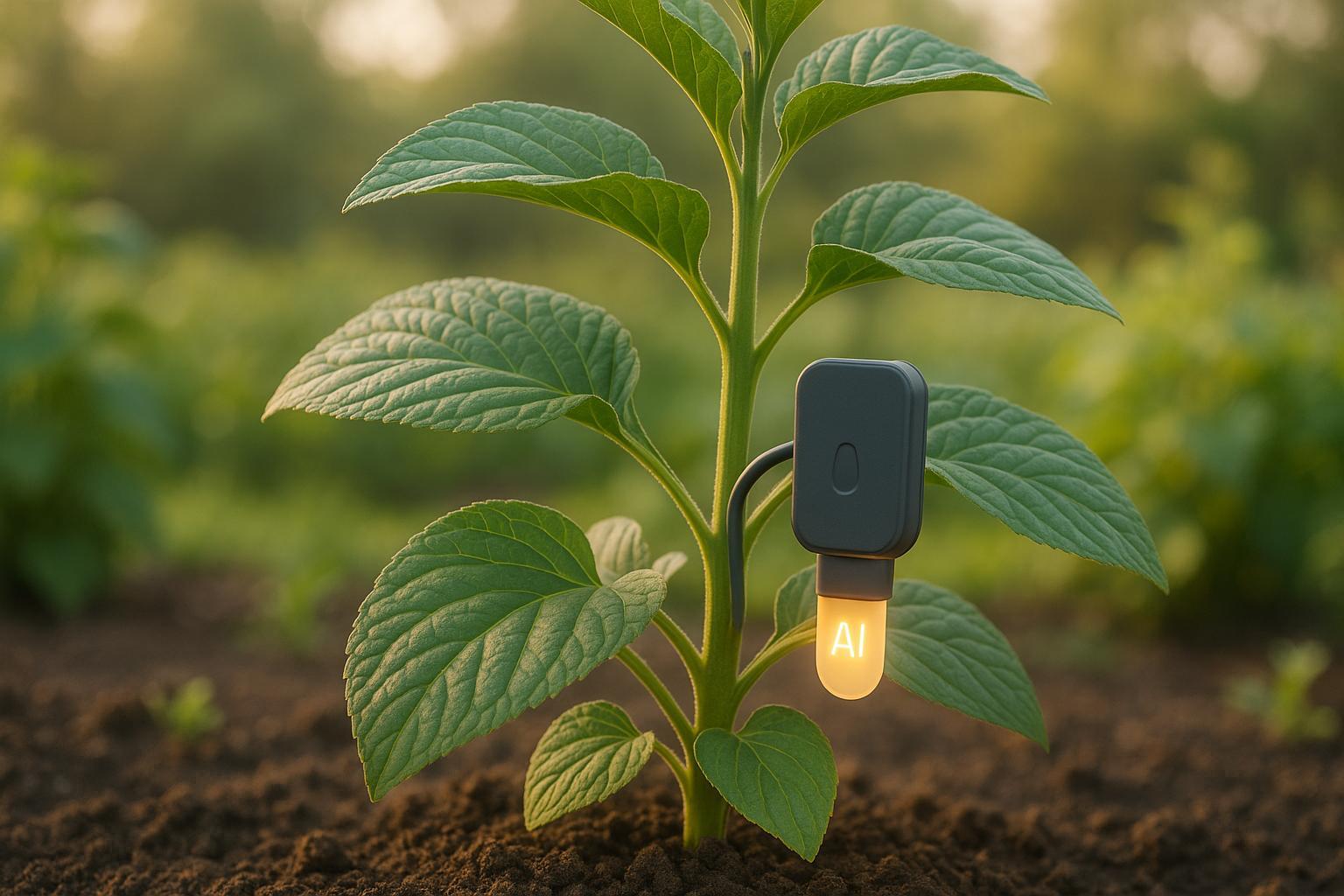
AI Sensors for Perennial Plant Stress Detection
Explore how AI sensors are revolutionizing perennial plant care by detecting stress early and optimizing water management for sustainable gardening.